Some may consider them mundane but they are so important, and often not talked about – alleys. Specifically, those in downtown Ocean City, Maryland, south of 15th Street; this is the oldest section of town.
Some may refer to these pathways by other names: backstreets, passages, secondary roads, little streets, mews, etc. but the commonly used term is “alleys.” In the Town of Ocean City they are often referred to as “lanes.” Typically, they do not have the characteristics of regular streets, which may have wide travel lanes, on street parking, curb and gutter, storm drainage, lighting, and sidewalks. The alleys in downtown Ocean City often have narrow traffic lanes (approximately 14 feet to 20 feet wide) with asphalt covering their full widths, with little other amenities. They are utilitarian in purpose.
Ocean City Alleys
Ocean City’s downtown is served by several alleys that generally run in a north/south orientation. Reviewing these alleys from east to west below, as well as a short description of each, if not familiar. Each of these public ways have their own personality.
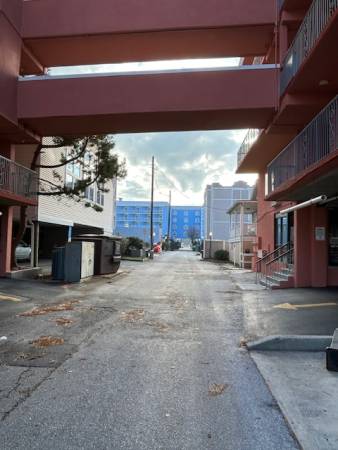
Washington Lane found between the Ocean City Boardwalk (Atlantic Avenue) and Baltimore Avenue. This alley starts on its south end at 2nd Street and continues northwards to 15th Street with a break between 7th and 8th Street; where Surf Avenue is located in perpendicular orientation to the Boardwalk. Washington Lane, then continues further, beyond 15th Street; especially if you are on foot or a bike, where it cuts through several hotel parking lots. The land use types along this alley are numerous, but more commercial in nature, including hotels, restaurants and condos.

Wilmington Lane is between Baltimore and Philadelphia Avenues. At its south end, it starts at N. Division Street, between the 7-11 store and the OC Baptist Church. It only runs up to 3rd Street but starts again at 4th Street. It then continues in a direct path (with many stop signs at every street crossing) to 15th Street. The uses along here are primarily residential north of 5th Street and provide a variety of interesting vintage Ocean City buildings including the former OC Dairy building at 707 Wilmington Avenue, just north of 7th Street (look for the sign on building).
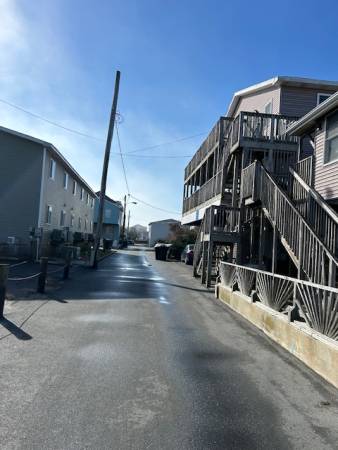
Dayton Lane is located between Philadelphia Avenue and St. Louis Avenue. It starts at N. Division Street to 3rd Street and then there is a break until 9th Street, where it extends to 15th Street. This alley has mostly residential uses along the path. Its surprisingly quiet, considering this location is immediately north of the Route 50 Bridge. The northern section of Dayton Lane, passes by mostly residential uses to 13th Street then there are public and commercial uses.
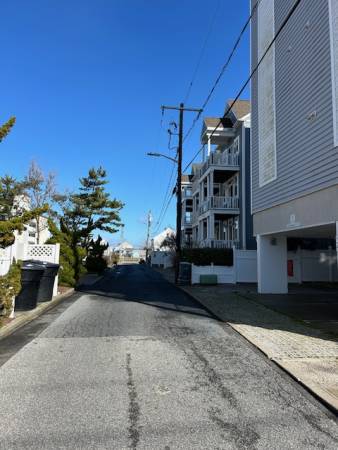
Bayview Lane is located between St. Louis and Chicago Avenues. It is only three blocks in length; between N. Division and 3rd Streets. This abbreviated alley only has residential uses.
Each of these alleys only exists north of the gateway to Ocean City, known as N. Division Street; no north-south alleys extend south of this entranceway.
Other, Lesser-Known Alleys
There are a few dedicated “alleys” throughout downtown Ocean City that people may not be aware and each has its own story as to why it was developed. Trout Lane is located between 14th and 15th Streets just west of St. Louis Avenue. Wood Lane, located between 12th and 13th Streets, it runs in an east/west orientation; between Baltimore and Philadelphia Avenues. Lastly, there is a small alley, which is located mid-block, between Somerset and Wicomico Streets. It runs east to west, on the west side of S. Baltimore Avenue, immediately north of the Dunkin Donuts store at 406 S. Baltimore Avenue. This short segment of road (about 200 feet in length) is known as Seaside Lane. Interestingly, this pathway was laid out to provide pedestrians access, in a period when there was an active rail line, from the former railroad station, once located on S. Philadelphia Avenue, east to S. Baltimore Avenue and the boardwalk. The lane still remains today but is barely recognizable and does not have a street sign identifying it.
Alleys in General Terms
Historically, alleys were viewed by many as “back streets” and often looked at negatively, as places where trash is collected, rain water pools, fear and crime happen, and other unsanctioned behavior occurs in these often dimly lit areas.
But, while some of these factors may be true, there are many positive benefits to these lowly appreciated travel ways.
Attributes of Alleys
Let’s start with the following positive elements:
- Trash collection – great for businesses and residents to place their screened trash receptacles. Conversely, if trash receptacles are located in the front of properties, this diminishes the appearance of primary street and walkways.
- Business and resident deliveries – a great option for large trucks to make deliveries to the rear of the building, where traffic is not blocked and the views on primary streets are kept open and made available for table seating.
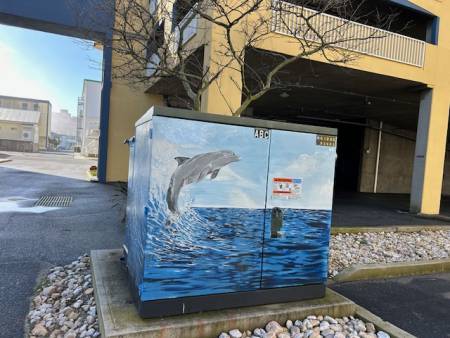
Painted utility box on Washington Lane near 26th Street. Sponsored by Crystal Beach Hotel. - Additional parking – if sufficiently wide enough, alleys are a great location for parking, especially for employees or at least access to off-site parking. An added benefit is that it” hides” parking for vehicles in the rear of a business or residence. Less curb cuts in front of a property, for driveways, makes for a much-improved pedestrian pathway.
- In Ocean City, many of these alleys often contain residential and hotel uses. They are the “eyes on the street” for improved passive surveillance.
- Although out of view, alleys can be an unexpected location for public art, as seen in many wall murals and painted utility boxes, throughout downtown Ocean City.
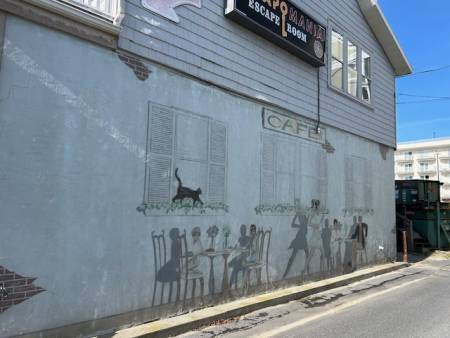
Wall mural on Washington Lane just north of 2nd Street. - As evidenced in Ocean City, especially during windy conditions, the alleys can serve as a great place to bike by using the adjacent buildings as a wind block.
- In urban design, they are used to assist in breaking up long blocks. Often used as shortcuts.
Alleys in Other Communities
Chicago is the king of alleys in the United States; over nineteen hundred miles of these “little streets.” Considered the nation’s oldest public street that has been continuously inhabited is Philadelphia’s Elfreth’s Alley. Other cities with large alley systems include Seattle, Nashville, Detroit, Savannah, Philadelphia, and Charleston. Generally, they are located in older cities and communities, however, newer mixed-use projects following the new urbanist planning principles have been incorporating them into projects, too.
Alleys are common throughout Europe and Asia and over time have evolved into much more than just basic use. Communities have actually turned alleys into intimate gathering spaces and small celebrations, seating for restaurants, retail activities and more. Several locations in the United States have been repurposing their alleys into similar uses. Other communities are using their alleys for improved stormwater drainage and other physical improvements, beyond just commercial uses.
Select Quotes on alleys
- “The unsung alley has the potential to create an intimate American urbanism, it just need a little attention from urban designers,” – Robert Steuteville
- “As an urban form, alleys have completely escaped the attention of historians. … Understanding the alley’s past reveals it for what it is today; a hidden resource for making our city’s stronger and more prosperous.” – Thomas Dougherty, The American Alley – A Hidden Resource.
Ready to Explore?
So, on your next visit to Ocean City, take a stroll or a bike ride through some of the alleys of downtown. You will see firsthand the significant contribution and utility, along with some often-missed points of interest; whether it be a public art project, a traditional Ocean City building with its porches, dormers and a simplistic appearance, or just to experience a quite spot in what can be the much anticipated, summer time hustle and bustle in Maryland’s favorite beach resort. See you there!!

